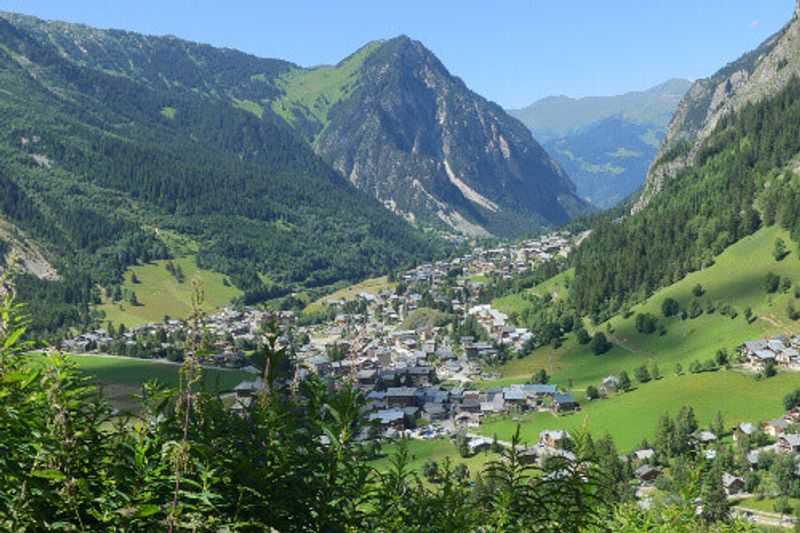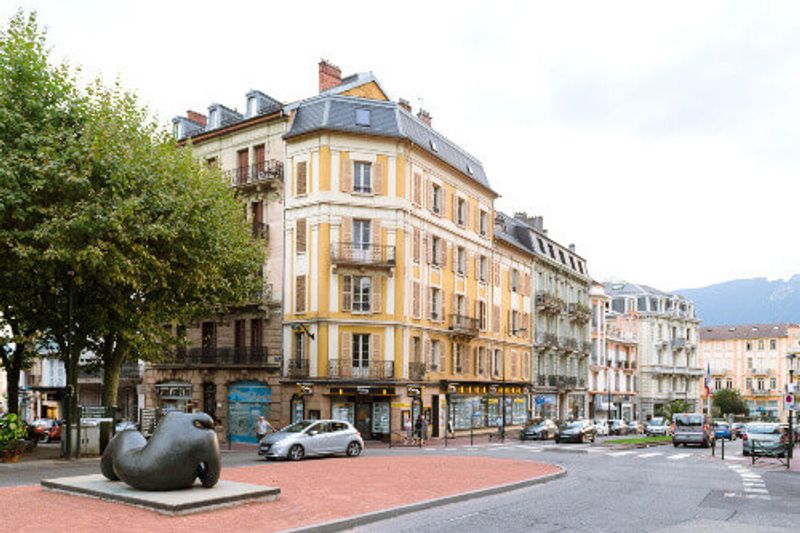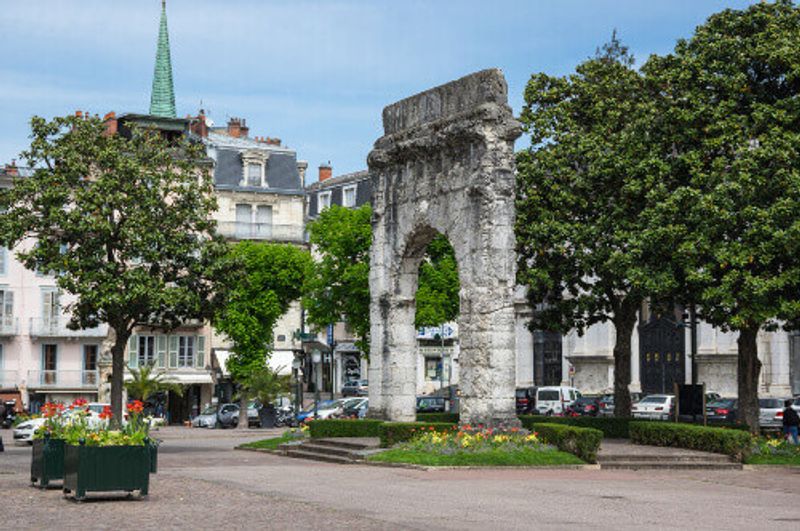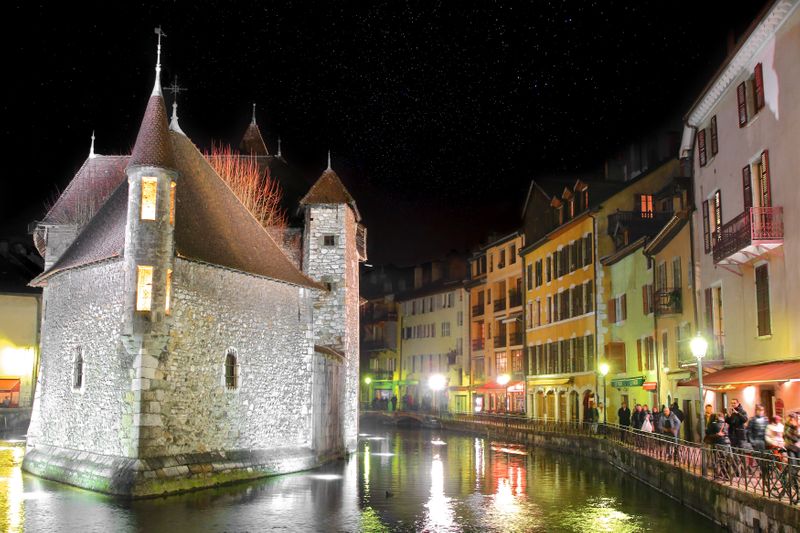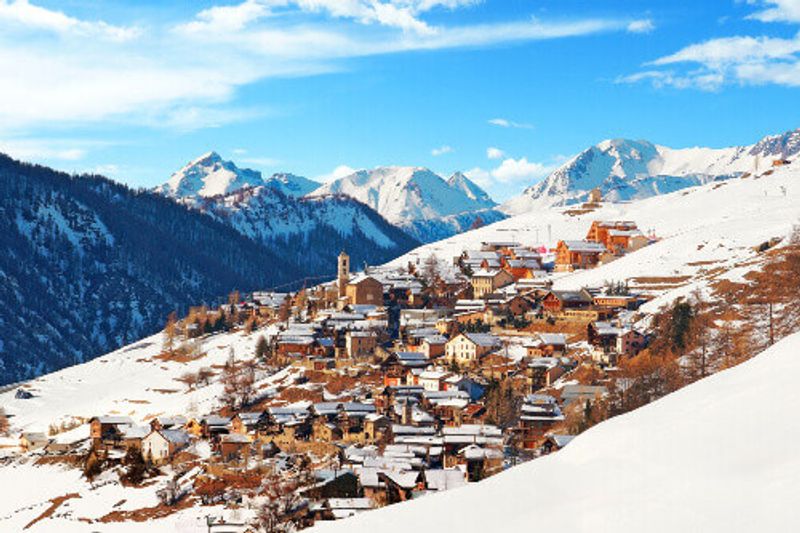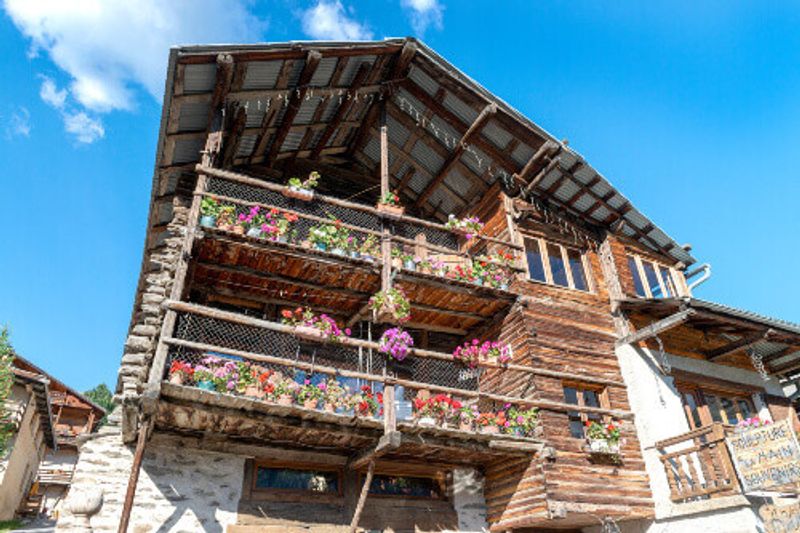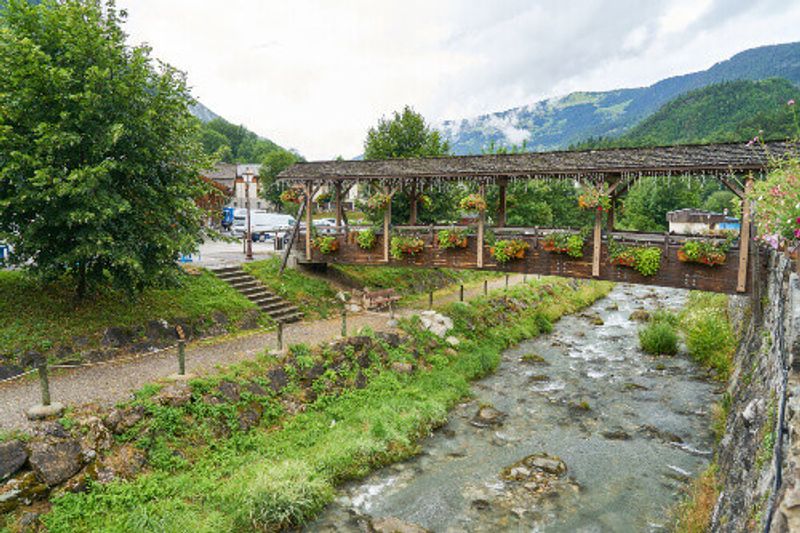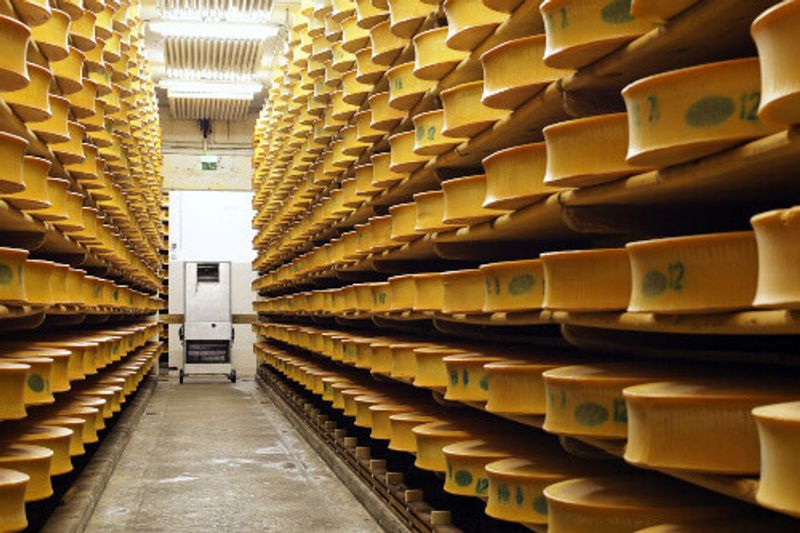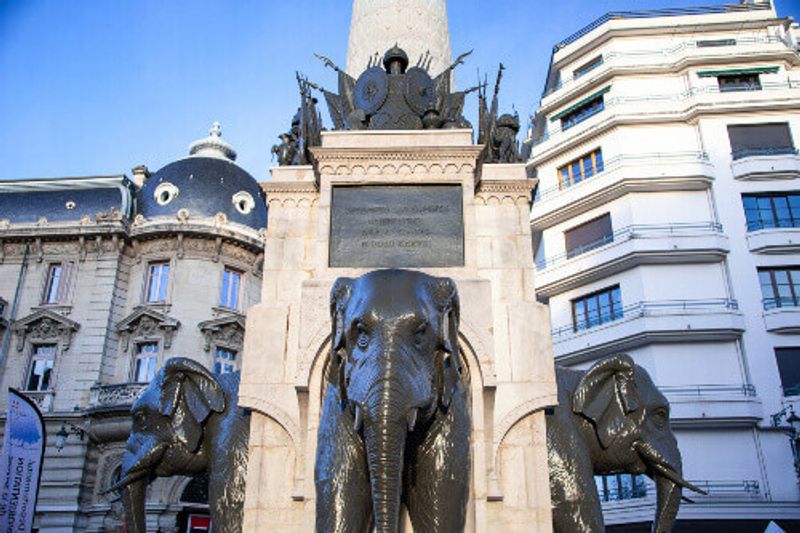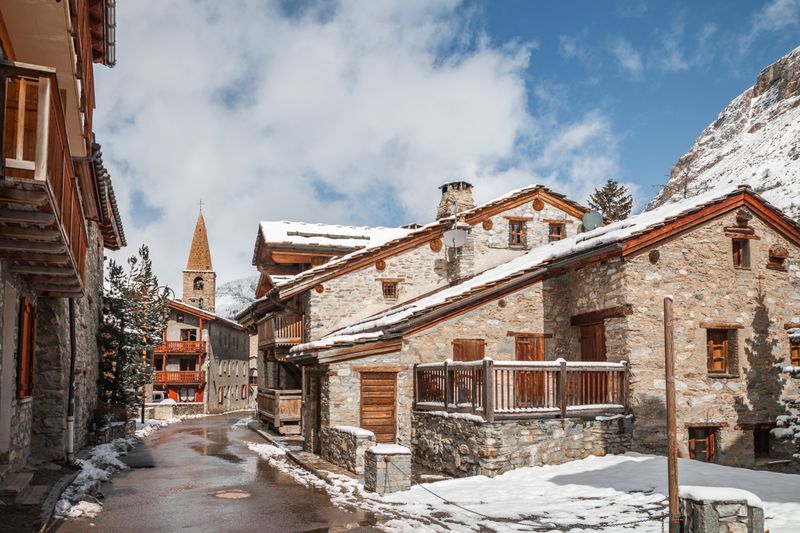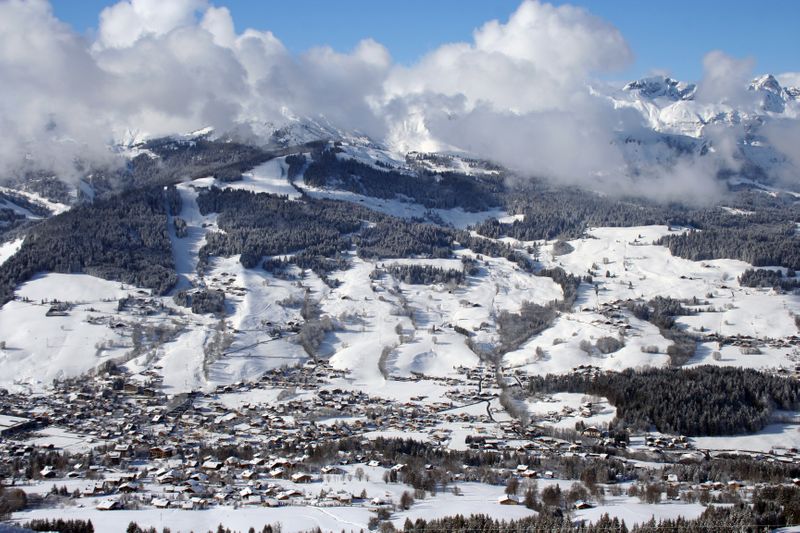With dramatic peaks, fairy-tale villages and postcard-perfect views, the French Alps towns are as breathtaking as the landscapes that surround them. Whether you're chasing powder in winter or sunshine hikes in summer, these mountain enclaves offer more than just a basecamp—they're destinations in their own right. From spa towns with storied pasts to hidden hamlets with big alpine charm, here are six unforgettable towns to include in your French Alps travel plans.
1. Pralognan-la-Vanoise: A quiet alpine escape
Nestled in the heart of Vanoise National Park and shadowed by the mighty Grande Casse glacier, Pralognan-la-Vanoise is as authentic as it gets. Home to just 700 people, this village blends beautifully into its mountainous surroundings. Stone houses with wooden shingles line the narrow streets, creating the feeling of a bygone era.
In summer, the area is popular with hikers tackling trails like Lac des Vaches and Col de la Vanoise. In winter, its family-friendly ski slopes and cross-country trails make it an appealing alternative to larger resorts.
Did you know?
Pralognan-la-Vanoise was the curling venue for the 1992 Albertville Winter Olympics.
2. Aix-les-Bains: Lakeside charm and thermal bliss
For those seeking wellness with their alpine scenery, Aix-les-Bains offers the best of both. Set on the shores of Lac du Bourget—France’s largest natural lake—and beneath Mont Revard, this Belle-Époque town has drawn health-seekers for centuries.
No visit is complete without a soak in Aix’s magical thermal waters at the Thermes Chevalley spa. The calcium, bicarbonates and other minerals in the water are said to help ease everything from tendonitis to arthritis and stress. Once out of the water, there’s plenty more to see and do in the town.
A walk through the old town, for example, is to embark on a journey back in time. Take in the 1st century Roman Arch of Campanus, thought to symbolise crossing into the afterlife, followed by the Gothic 15th century castle that is now the town’s City Hall. Shop along the picture-perfect Rue Albert 1er, and gaze upwards at the abundance of flower-adorned balconies.
Just as enticing is the local cuisine, shaped by its proximity to lake and vine. The surrounding region produces Savoie wines and fresh fish such as perch and Arctic char, which are staples on local restaurant menus.
Even if you’re not one for gambling, one of the grandest examples of La Belle Époque architecture is The Casino Grand Cercle, complete with wonderfully ornate mosaics and stained glass windows.
Did you know?
Queen Victoria, Edith Piaf, and Winston Churchill all holidayed in Aix-les-Bains.
3. Annecy: Canal-lined beauty and alpine lakes
Sometimes called the "Venice of the Alps," Annecy effortlessly combines storybook charm with natural splendour. Its old town, Annecy old town, is a maze of cobbled streets, pastel facades and flower-covered bridges.
Wander the cobbled, flower-lined streets of the vieille ville (old town) and enjoy all the artisanal shops, canal-side restaurants, brilliant antique and food markets - all served with a serious slice of history. Don’t miss the 12th-century Palais de L’Île (Island Palace). Originally a prison, which juts out iconically into the main canal, and stroll under the archways of the picturesque Rue Filaterie.
The centrepiece? Lake Annecy. Fed by mountain springs, it’s one of Europe’s cleanest lakes and ideal for swimming, paddleboarding, or simply picnicking on its shores. Visit in summer for wild swimming or in winter when snow dusts the town's rooftops.
Annecy is known for Alpine staples like tartiflette—a decadent mix of potatoes, reblochon cheese, lardons and onions—and raclette, which is melted cheese scraped over charcuterie and potatoes.
For the best photo op of Lake Annecy and its surrounding snow-capped peaks, walk over the Pont des Amours (Lovers’ Bridge). Connecting Esplanade du Paquier with the European Gardens, the bridge is fabled to grant lasting love to any couple to steal a kiss on it.
Top attractions in Annecy for first-time visitors:
- Wander the cobbled streets of the Annecy old town, lined with canals, markets and pastel-coloured buildings
- Visit the iconic Palais de l’Île, a 12th-century island prison-turned-museum
- Take in the views from Pont des Amours, one of the most photographed spots in town
- Stroll or cycle along the scenic Lake Annecy promenade
- Explore Château d’Annecy, a former residence of the Counts of Geneva, now a museum
- Enjoy local cuisine at a canal-side bistro—Annecy tourism is as much about the food as the scenery
4. Saint-Véran: France's highest inhabited village
The village of Saint-Véran, rightfully hailed by the association Les Plus Beaux Villages de France as one of the country’s most picturesque stopovers, is surrounded by the Queyras Regional Nature Park, right on the border with Italy. Sitting at over 2,000 metres (6,500 feet), it’s also one of the highest permanently inhabited villages in Europe.
The elevation alone is impressive, but it’s the architecture that steals the show. Here, houses are built with thick stone bases and timber-framed upper levels known as fustes, designed to store hay and survive harsh winters. Many of these traditional homes date back centuries and feature sundials painted directly onto the walls. A visit to Saint-Véran’s 17th-century church or its open-air museum reveals fascinating glimpses into alpine life.
The Queyras region is known for hearty mountain fare like crozets (small buckwheat pasta squares) and tourtons, deep-fried pastries typically filled with cheese or mashed potatoes. Several restaurants in the area serve these regional delights using age-old recipes.
Did you know?
Saint-Véran’s slogan is "The sun shines even on the backs of the roosters," a nod to its elevated position.
Beaufort-sur-Doron: Cheese and charm
Cradled in the Beaufortain Valley, Beaufort-sur-Doron is an alpine haven for foodies and hikers. The town is best known as the birthplace of Beaufort cheese—a firm, fragrant cow’s milk cheese.
Located about 20 minutes from the town, this world-famous yellow mountain cheese was awarded the highly regarded AOP (Appellation d'origine protégée) label in the 1960s. This means when you eat Beaufort cheese anywhere in the world, this is where it’s produced, matured and perfected. Local restaurants prominently feature Beaufort cheese dishes such as pasta sauces, fondue and dauphinoise potatoes.
Visitors can tour the local co-op to learn about the cheese-making process and, of course, indulge in tastings. In town, flower-covered bridges and stone chalets add to the quaint vibe, while nearby trails and ski slopes attract outdoor lovers year-round.
Did you know?
Beaufort cheese is often called the "Prince of Gruyères" and is a staple in alpine dishes like fondue and tartiflette.
6. Chambéry: History meets Alpine elegance
Tucked between lakes and mountains, Chambéry is a cultural gem with deep Savoyard roots. Once the capital of the historic Duchy of Savoy, it offers a rich tapestry of architectural styles, from medieval alleys to baroque buildings.
Don’t miss the Fontaine des Éléphants, a striking 17-metre-tall monument dedicated to General de Boigne. The town is also home to the 11th-century Château des Ducs de Savoie and Le Musée des Charmettes, where Jean-Jacques Rousseau once lived.
Easily walkable and with convenient access to Geneva and Lyon, Chambéry is an ideal base for further French Alps travel.
Chambéry is the birthplace of vermouth, and local producers still make artisanal versions today. Pair it with Savoyard charcuterie or a slice of regional pear tart.
Did you know?
Chambéry has one of France’s oldest covered markets, Les Halles, selling local produce and cheese since the 19th century.
Bonus- Chamonix
Located in the shadow of Mont Blanc, Chamonix is one of the most famous French Alps towns for good reason. Known globally for its mountaineering heritage and extreme sports, it was the site of the first Winter Olympics in 1924 and continues to draw climbers, hikers and skiers from all over the world. Chamonix travel offers a unique mix of high-altitude thrills and alpine town charm, with gear shops, cafes and traditional chalets lining the main streets.
The best time to visit Chamonix in the French Alps depends on what you’re after—skiing is at its peak from December to March, while June through September is ideal for hiking and climbing. Summer hiking trails near Chamonix range from gentle valley walks to challenging treks like the Grand Balcon Nord, offering sweeping views of glaciers and jagged peaks. For first-time visitors or seasoned outdoor lovers, a visit to Chamonix promises both adventure and access to some of Europe’s most dramatic mountain scenery.
Regional customs in the French Alps
While the beauty of the French Alps towns often steals the spotlight, regional customs offer just as much colour. In alpine villages like Saint-Véran and Beaufort, seasonal festivals celebrating agriculture, cheese-making and mountain life remain an important part of the local calendar. Traditional costumes are worn during parades, and many communities maintain age-old practices like wood carving, cheese ageing, and even storytelling passed down through generations.
Observing or joining in these customs can add a deeper dimension to your visit, connecting you to the region’s cultural roots. For more insights into French culture, read our article, “The faux pas to avoid when travelling in France”.
Getting around the French Alps: Transport tips
Travelling through the French Alps requires a bit of planning, but the journey is often as rewarding as the destination. While larger towns like Annecy, Grenoble and Chambéry are connected by train, reaching smaller French mountain towns often involves regional buses or car hire. In winter, some ski resorts like Courchevel and Megève offer shuttle services from nearby transport hubs. Summer hikers will find that cable cars and chairlifts can cut down ascent time, especially in Chamonix travel areas. Always check seasonal timetables and road conditions, particularly in snowy months.
The best French Alps towns to visit in 2025
Planning your next French Alps vacation? Here’s a quick guide to the most picturesque and rewarding alpine towns to explore:
- Pralognan-la-Vanoise: Best for glacier views and national park hikes
- Aix-les-Bains: Ideal for lakeside relaxation and thermal spa days
- Annecy: Great mix of nature, history, and lake activities
- Saint-Véran: Perfect for altitude lovers and heritage charm
- Beaufort-sur-Doron: A haven for cheese lovers and nature walks
- Chambéry: A base for cultural sightseeing and regional exploration
- Chamonix: Popular for year-round adventure, glacier hikes and access to Mont Blanc
- Grenoble: Best for urban culture paired with mountain scenery and outdoor access
- Megève: Stylish resort town known for its luxury chalets and skiing for beginners
- Courchevel: World-class ski destination with upscale dining and luxury accommodation options
Ready to explore the French Alps?
The French Alps towns offer a blend of culture, cuisine and mountain adventure that’s hard to match. Whether you’re here for the skiing, the scenery or the slow mornings with coffee and croissants, there’s a town that feels tailor-made for your kind of holiday.
With Inspiring Vacations, you can choose the itinerary that suits your travel style. Our range of France tours explores the country’s most enchanting regions, from wine-tasting in Burgundy to historic cities, scenic rail journeys and beyond. Discover the charm, cuisine and culture of France with a tour that brings the country to life—start planning your next holiday today.
